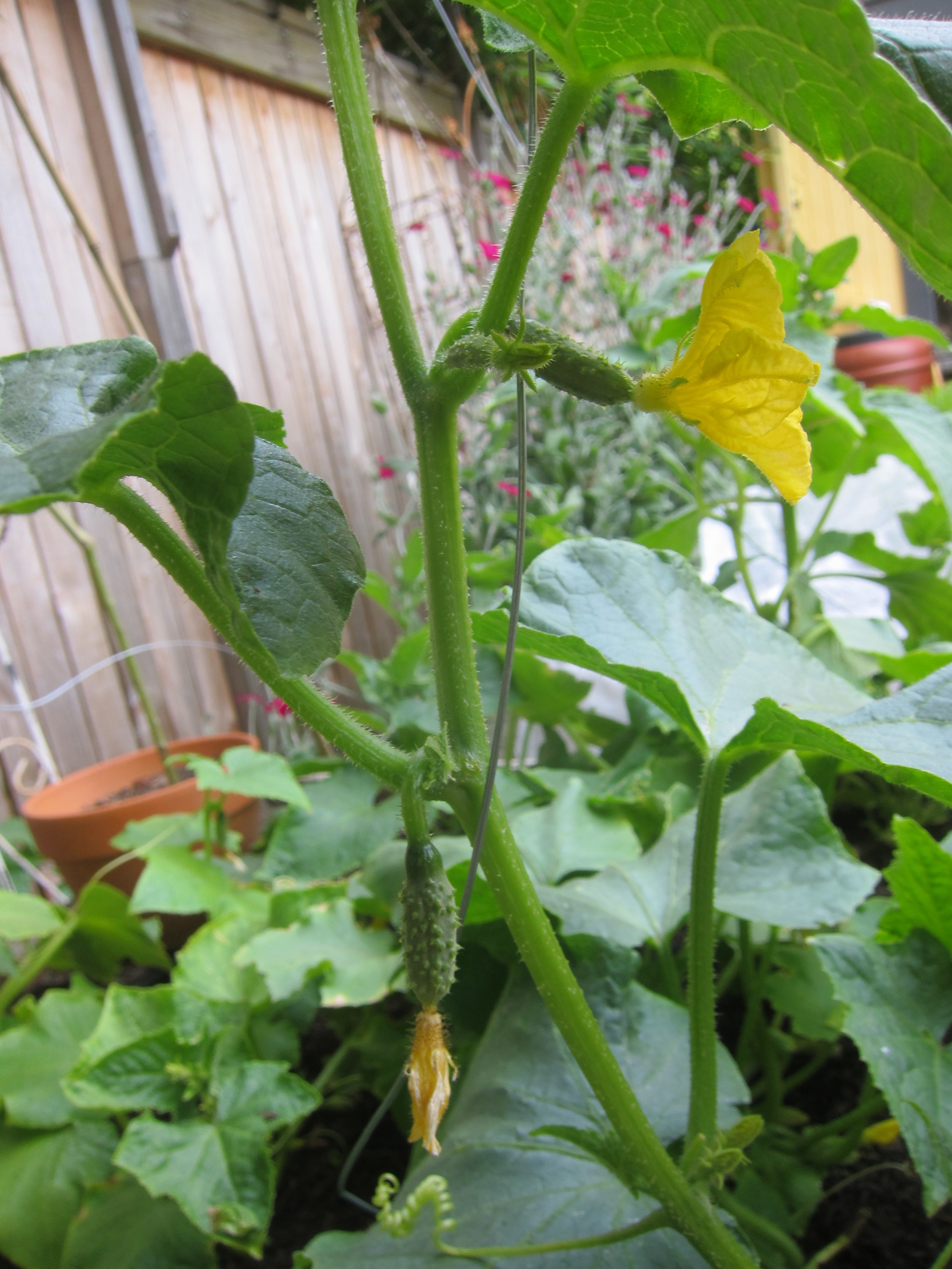Planting Cucumbers
June is a great time to get a second sowing in of a few crops that will do well in warmer weather. Basil, beans, melons and more. With our cool spring, I've been planting cukes all over town this last week in the hopes that the summer sun will start shining! Cucumbers are one of those vegetables that need not be planted as starts. They germinate rather quickly, grow to maturity over summer and produce enough fruit that the jump-start a seedling gives you is really negligible. I prefer to plant seeds directly into garden beds because it allows for much more freedom and experimentation. Why buy a start when you can choose from a handful of varieties and have a little bit of LOTS of cukes?
 Cucumbers fall under several umbrellas, each offering a variety of fruits. There are the 'slicers' - these tend to have thicker dark green skins and are bred to contain smaller seeds. Slicers are what we typically find at the grocery store, so if you like a firm cuke with a nice round flavor, try these. 'Pickling' cucumbers are geared toward (you guessed it) pickling. They are firm-fleshed with a larger seed cavity. The skins are typically a more lime green and have those little spikes on them that are indicative of a dill pickle. These pickles aren't so tasty for eating raw, but they make great pickles and are a great way to stock the pantry. 'Gherkins' are smaller and thin skinned. Indian pickles and cornichons fall under this group of cultivators. Outside of these main categories, there is somewhat of a wild card category of cukes - Lemon cucumbers, Thai cucumbers and more. The flesh on cucumbers can be lime-hued, orange, red, yellow and more. They come in a wild array of shapes, too. Be sure to check out Bakers Creek Heirloom Seeds for some great varieties to add a little mix to your garden. Try something new! It's not too late to order some seeds and get growing. And tips on how-to plant are coming soon!
Cucumbers fall under several umbrellas, each offering a variety of fruits. There are the 'slicers' - these tend to have thicker dark green skins and are bred to contain smaller seeds. Slicers are what we typically find at the grocery store, so if you like a firm cuke with a nice round flavor, try these. 'Pickling' cucumbers are geared toward (you guessed it) pickling. They are firm-fleshed with a larger seed cavity. The skins are typically a more lime green and have those little spikes on them that are indicative of a dill pickle. These pickles aren't so tasty for eating raw, but they make great pickles and are a great way to stock the pantry. 'Gherkins' are smaller and thin skinned. Indian pickles and cornichons fall under this group of cultivators. Outside of these main categories, there is somewhat of a wild card category of cukes - Lemon cucumbers, Thai cucumbers and more. The flesh on cucumbers can be lime-hued, orange, red, yellow and more. They come in a wild array of shapes, too. Be sure to check out Bakers Creek Heirloom Seeds for some great varieties to add a little mix to your garden. Try something new! It's not too late to order some seeds and get growing. And tips on how-to plant are coming soon!
